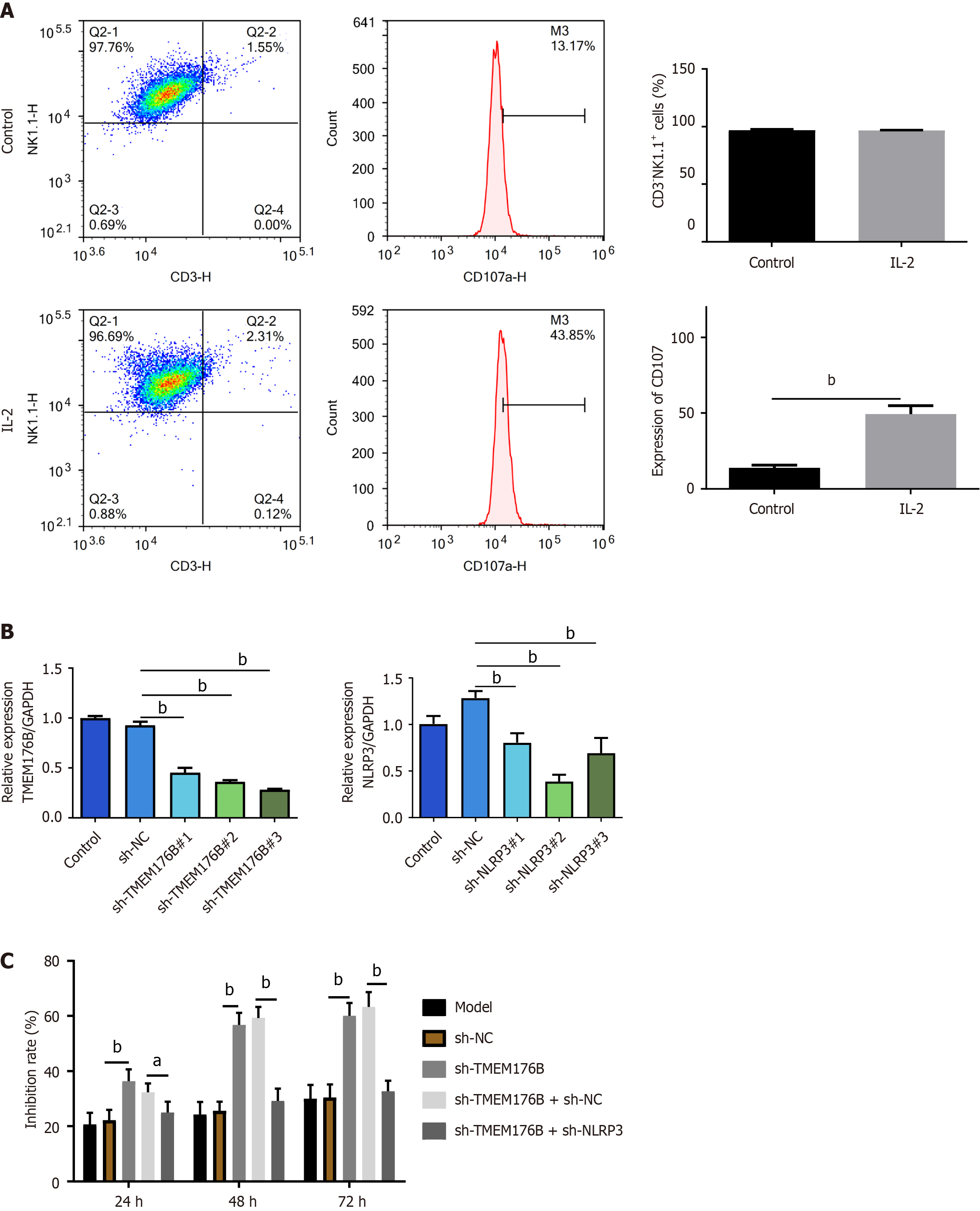Copyright
©The Author(s) 2025.
World J Gastrointest Oncol. Mar 15, 2025; 17(3): 97673
Published online Mar 15, 2025. doi: 10.4251/wjgo.v17.i3.97673
Published online Mar 15, 2025. doi: 10.4251/wjgo.v17.i3.97673
Figure 5 Short hairpin RNA targeting transmembrane protein 176B increased inhibition rate of interleukin-2-exposed natural killer cells on CT26 cells.
A: Flow cytometry was used to evaluate CD3-NK1.1+ cell number and CD107 expression post interleukin-2 (IL-2) stimulation in natural killer (NK) cells. n = 3 in each group; B: Quantitative reverse transcription PCR was applied to assess the relative expression of TMEM176B and NLRP3 in CT26 cells. n = 3 in each group; C: MTT assay was used to determine the inhibition rate of IL-2-exposed NK cells on CT26 cells with TMEM176B or NLRP3 knockdown over 24, 48, and 72 hours. n = 3 in each group. aP < 0.05; bP < 0.01. NK: Natural killer; sh-TMEM176B: Short hairpin RNA targeting transmembrane protein 176B; sh-NC: Short hairpin RNA interference-negative control; IL-2: Interleukin-2.
- Citation: Qian W, Xu CY, Hong W, Li ZM, Xu DG. Transmembrane protein 176B promotes epithelial-mesenchymal transition in colorectal cancer through inflammasome inhibition. World J Gastrointest Oncol 2025; 17(3): 97673
- URL: https://www.wjgnet.com/1948-5204/full/v17/i3/97673.htm
- DOI: https://dx.doi.org/10.4251/wjgo.v17.i3.97673









